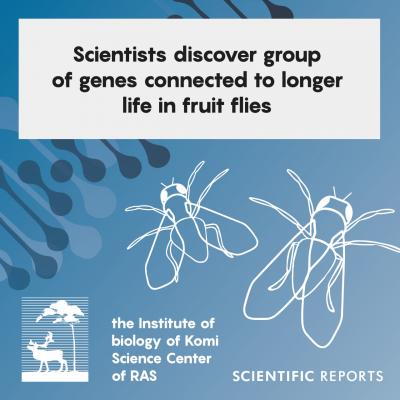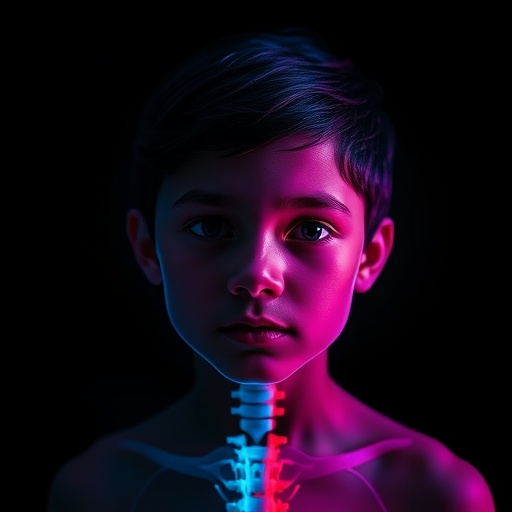E(z) longer life: New insights on genes linked to longer life and higher fertility

Credit: Insilico Medicine
Thursday, July 18 – Alexey Moskalev, Ph.D., Head of the Laboratory of Geroprotective and Radioprotective technologies, and co-authors from the Institute of biology of Komi Science Center of RAS, the Engelgard’s Institute of molecular biology of RAS and Moscow Institute of Physics and Technology published a scientific article titled “Transcriptome Analysis of Long-lived Drosophila melanogaster E(z) Mutants Sheds Light on the Molecular Mechanisms of Longevity” in Nature Scientific Reports – the leading international multidisciplinary weekly journal.
Scientists are now closer to understanding how a genetic mutation found in a fruit fly could hold the key to a longer lifespan. Using genome-wide transcriptome analysis, the team noted that lifespan extension and stress resistance in fruit flies — Drosophila — carrying the E(z) histone methyltransferase heterozygous mutation, or the E(z) mutation, were correlated with changes in the expression levels of 239 genes. The expression levels of some of the genes were doubled in flies with the E(z) mutation.
According to the results of the study, the mutant flies had a 22 to 23 percent lifespan extension compared to the control group. In addition, these flies were more resistant to hyperthermia, oxidative stress and endoplasmic reticulum stress, which can disrupt processes designed to help cells stay healthy. The mutant flies were also more fertile, the researchers added.
E(z) genes appear connected with gene expression that affects metabolism, such as carbohydrate metabolism, lipid metabolism, drug metabolism and nucleotide metabolism. The expressions that related to aging were involved in pathways related to the immune response, cell cycle and ribosome biogenesis.
“The findings of the conducted research may be a step toward investigating whether the E(z) mutation could play a role in human longevity and have implications for understanding the role of global derepression of chromatin in aging,” said Dr. Alexey Moskalev, Ph.D., Head of the Laboratory of Geroprotective and Radioprotective technologies.
The laboratory of geroprotector and radioprotector technologies of the Institute of Biology Komi SC UrB RAS is regularly publishing research papers in peer-reviewed journals. The laboratory’s research is aimed at studying the molecular and genetic mechanisms of lifespan regulation, aging process, stress- and radioresistance. The scientific team succeeded in identifying several dozen genes with pro-longevity action. Geroprotective effects of various pharmacological agents, natural compounds, and plant extracts on aging-related signaling pathways, lifespan and physiological functions are being actively studied. Thanks to the members of the laboratory team, data libraries DrugAge and Geroprotectors.org have been created in collaboration with leading institutions of the world. In addition, studies on the influence of factors of different nature, primarily in small doses and concentrations, on lifespan and non-linear effects (such as hormesis and adaptive response) are being carried. All studies are conducted at a high scientific level with the use of modern methods of obtaining data, their statistical and bioinformatic analysis.
###
For further information, images or interviews, please contact:
Alexey Moskalev
[email protected]
Please follow the link below to read the article:
https:/
About the Institute of biology of Komi Science Center of RAS
The Institute of Biology of Komi Scientific Centre of the Ural Branch of the Russian Academy of Sciences (IB Komi SC UB RAS) was founded in 1962. The Institute is the largest academic research centre of the East European part of Russia, with biology and ecology as two primary areas of research. The Institute consists of six departments and four laboratories, the Zoological museum, the Botanical garden and the Herbarium (SYKO). The main fields of research include the study of biodiversity, structural and functional organization, stability and productivity of taiga and tundra ecosystems, biological effects of ionizing radiation and other physico-chemical factors on cells, living organisms and natural ecosystems; problems of radiation and ecological genetics, as well as the development of methods for monitoring, bioindication; creation of inventories and databases of biological resources of the European North-East with the use of remote sensing and GIS technologies.
The official website: https:/
Media Contact
Alexey Moskalev
[email protected]




